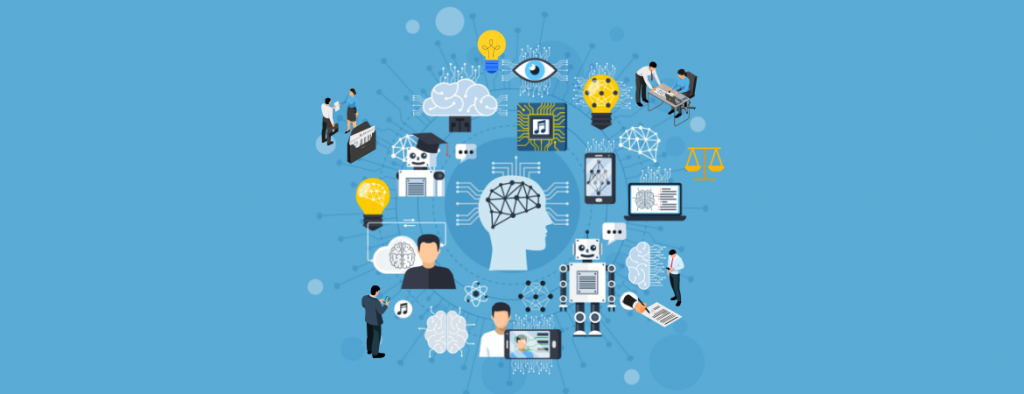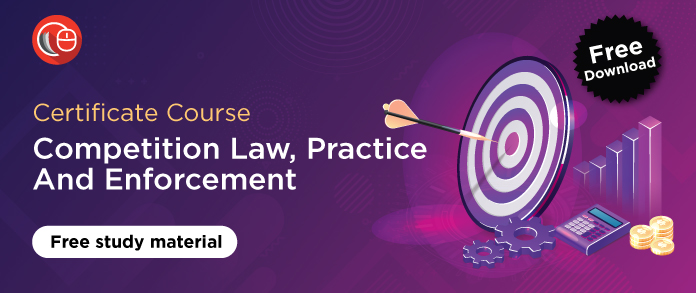This week I have decided to delve into Algorithmic Collusion. It’s something which you have probably read about in the passing but has not paid much attention to, mainly because:
a. the topic is relatively complex to understand (just like the terminology).
b. The legal regime around it is not very clear.
Instead of throwing technical jargon at you and explaining it like a textbook definition, let me rephrase it and ask you a simple question-
Can robots collude?
This is the entire premise of the topic.
Before engaging in this, let us get some basics clear- what is collusion? Basically, it means getting together secretly to deceive or cheat other people in some manner. In the area of competition law, this has to do with getting together secretly to do away with fair competition in some way.
You might have seen the movie The Informant portraying Matt Damon as the lead protagonist. If you have not seen the movie- I highly recommend you to watch it.
It is a 2009 American Biographical crime-comedy movie directed by Steven Soderbergh where Matt Damon plays the titular role of Mark Whitacre whose company was involved in a price-fixing conspiracy with five other competing food processing companies. In this conspiracy, Mark Whitacre’s company (Archer Daniels Midland) along with the five other companies, together raised the prices for the buyers of an animal feed additive named lysine. The movie shows how the senior management of the companies including Matt Damon would secretly meet in various hotels in Tokyo, Paris, Mexico City and Hong Kong in the garb of business meetings and decide the output quantities and prices to be fixed. Matt Damon’s character eventually becomes a whistle-blower who confesses the deeds to the FBI and works alongside them to record the business meetings to collect enough evidence required for the trial.
The movie beautifully captures the orchestration of a global cartel and the eventual whistleblowing which led to the imposition of massive fines on the violators.
This would have been the state in 1992 and continued right up to 5- 6 years ago. This is exactly how competitors could orchestrate year-long cartels. They used to create associations and organise secret business meetings to collude at such a massive level.
Cut to the 2020s…. the scenario has changed quite a lot.
Now we are seeing a new wave of collusion. Gone are the days when men used to get together and collude in secret meetings. It is now being realised that collusion can be achieved by computers relying on machine learning capabilities. Companies are in a position to develop algorithms that can interact with the algorithms of other competing companies. As a result, the senior management does not even need to meet in secret or organise meetings to achieve their objectives of collusion.
How does this work?
Now let’s dig a little bit deeper.
Algorithms are basically “smarter” software which do a job that typically used to be done by humans before. For example: earlier we had a team of people who used to analyse primary and secondary data by way of surveys, study them, cross-check with the situation of supply and accordingly decide what the price of a product should be.
Now this work is done by software. It automatically tracks buying preferences and trends and pricing decisions can be amended accordingly. One example which might have been experienced by everyone somewhere is how the price of a product increases depending upon how many customers add it to their bags or carts.
Now imagine if these preferences and the data relating to choice by different customers were to be commonly accessible to competing companies such as Amazon and Flipkart.
There may be no direct communication or contact between these two companies, but the algorithms used by both of them will be using the common data and will therefore be aligned with respect to price changes. Which means that if there is a trend towards buying a particular product on Amazon, the algorithm used by Flipkart can come to know of this and hike its product prices accordingly!
Worse, Artificial Intelligence is considered to be the next version of algorithms where algorithms perfect and adapt themselves (tune themselves) to economic realities without the need of human intervention. This is what is called machine learning. Which means, not only will these software mark the current trends, but may even be able to predict future trends and aid future pricing decisions!
Let aside Amazon and Flipkart, how can you say that Ola and Uber will not make use of such similar algorithms to coordinate prices with each other?
There would be peak times when people have used taxis and certain times when people have preferred larger cars at specific places. All of this data can be commonly used by both entities not by directly sharing it, but because of the access of algorithms to this kind of data. And pricing decisions would be amended accordingly.
We have already started seeing some complaints in foreign jurisdictions
- An Uber rider filed a class action against Uber’s CEO on the basis that Uber ensures that the drivers engage in price-fixing through Uber’s pricing algorithm. Read about it here.
- It was observed that in the Amazon marketplace, in 2011 a biology textbook “The Making of a Fly”was made available on Amazon for $23 million. That particular price was set through the interaction of two different sellers’ programmed algorithms. The first algorithm automatically set the price of the first book for 1.27x the price of the second book (which belonged to another seller). The second algorithm had automatically set the price of the second book at 0.9983x the price of the first book. This led to an upward spiral in price. Read about it here.
- Algorithms can also figure out what products are usually purchased together, allowing them to optimise the price of a whole shopping cart.
- The Competition Commission of India has been investigating the airline companies to see if there is a possibility that airline companies are fixing their fares basis user search of different flights on aggregator websites like MakeMyTrip or Goibibo. Till now a case has not been able to be established but the CCI will maintain its scrutiny. Read about it here.
What does such collusion result in?
- Imagine if competitors stop competing with each other and everyone unilaterally raises prices. It may lead to companies making supernormal profits.
- Companies may unilaterally restrict the supply of output unless the buyers agree to the pricing decided.
- Companies may have the potential to take part in tenders and then rig them.
At the end of the day, the effects of the collusion percolates to the consumer who ends up paying 3-4 times the price of the product.
Competition Law penalises entities which have the intent to collude. But how do you penalise programmes which are inflating prices without having specific intent?
Pricing algorithms might reach a new equilibrium on their own.
It is even conceivable that computers with machine learning capabilities reach collusive strategies although their designers may have not intended this.
Why should you know about all this?
I understand that I am dealing with a very specific technical topic, but at LawSikho, every week we endeavour to not only sensitize you with something new, but we also want to highlight the opportunity associated with it.
We are signalling a wave of litigations surrounding this issue which will raise the following issues that will need to be researched and answered:
- What features distinguish products or services that use algorithms, artificial intelligence, or predictive analytics? In which industries or business sectors are they most prevalent?
- What factors have facilitated the development or advancement of these technologies? What types of resources were involved (e.g., human capital, financial, other)?
- What are the advantages and disadvantages for consumers and for businesses utilizing products or services facilitated by algorithms, artificial intelligence, or predictive analytics?
- Is industry self-regulation and government enforcement of existing laws sufficient to address concerns, or are new laws or regulations necessary?
- What are the main consumer protection issues raised by algorithms, artificial intelligence, and predictive analytics?
- Is the current antitrust framework for analysing mergers and conduct sufficient to address any competition issues that are associated with the use of these technologies? If not, why not, and how should the current legal framework be modified?
- How are these technologies affecting competition, innovation, and consumer choices in the industries and business sectors in which they are used today? How might they do so in the future?
- How can regulators meet legitimate regulatory goals that may be raised in connection with these technologies without unduly hindering competition or innovation?
- What responsibility does a company utilizing these technologies bear for consumer injury arising from its use of these technologies? Can current laws and regulations address such injuries? Why or why not?
I am not making up these questions. These are questions that even the Federal Trade Commission, USA is dealing with right now.
The scope started off as a competition issue and is now spreading to other domains of law such as privacy, cyber tech, contractual reconsiderations, M&A strategies and most importantly policy decisions. As a lawyer, you need to understand the underlying legislation which will be associated with it.
It is the need of the hour to technically understand the subject and also understand the laws associated with it so we can figure out how to establish the legal regime around it and answer the above-mentioned questions. In fact, we may have to suggest amendments to existing laws to match up to these newer technologies.
Keeping in mind the future requirements, we have incorporated discussion on such elements in our Certificate in Competition Law, Practice and Enforcement, which will not only make you ready for what is important now but should also make you ready for what is going to be important 2-3 years later.
Students of Lawsikho courses regularly produce writing assignments and work on practical exercises as a part of their coursework and develop themselves in real-life practical skills.
LawSikho has created a telegram group for exchanging legal knowledge, referrals, and various opportunities. You can click on this link and join:
https://t.me/lawyerscommunity2
Follow us on Instagram and subscribe to our YouTube channel for more amazing legal content.







 Allow notifications
Allow notifications
